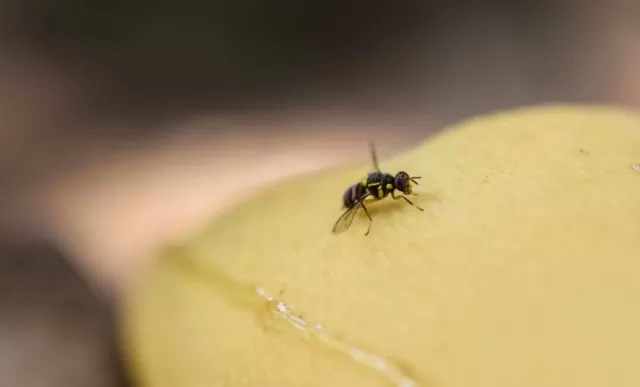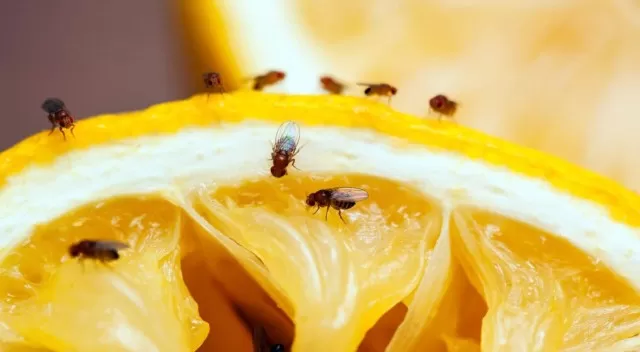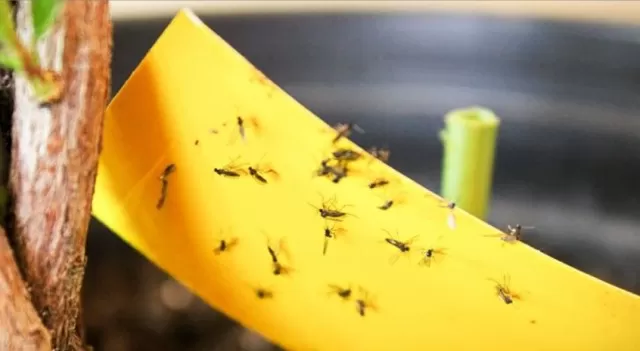Here, we’ll explain what gnats are, where they originate from, and provide effective methods to eliminate the current infestation.
Despite their small size, gnats can be highly bothersome when they invade your home.
You might have observed them hovering around your fruit bowl or houseplants, leaving you curious about their origins. Moreover, we’ll share essential tips on preventing gnats from returning in the future, ensuring a gnat-free and more enjoyable living space.
How to Get Rid of Gnats

Gnats are small flying insects that can be a nuisance in and around your home.
While most indoor gnats are not harmful, they can still be bothersome, and it’s essential to address the issue before it worsens. To combat gnats effectively, it’s crucial to identify the specific type of gnat you’re dealing with.
The three most common types are fungus gnats, fruit flies, and drain flies, each with different breeding grounds.
To get rid of gnats, there are several DIY solutions you can try that are easy, cost-effective, and efficient.
For fruit flies, a mixture of apple cider vinegar and sugar can be placed in a bowl, attracting the gnats, and ultimately killing them. Rotting fruit can also be used to lure and trap fruit flies.
For drain flies, using bleach or commercial drain cleaners can be effective in eliminating pests and their larvae from sink drains.
Another approach is using a candle as bait in a pan of water mixed with Dish Soap.
The heat from the candle attracts the gnats, causing them to fall into the soapy mixture and perish. Store-bought sticky traps, fly papers, or ribbons can also be strategically placed near gnat-infested areas to catch and eliminate insects.
When using store-bought traps, it’s essential to keep them out of reach of pets, as they can be harmful if ingested.
Overall, these DIY solutions provide practical ways to deal with gnats and help you maintain a clean and pest-free home. If the problem persists, consulting a professional pest control company might be necessary to ensure effective and long-term eradication.
How to Keep Gnats Away in the Future

Once you’ve successfully eliminated the gnats from your home, it’s essential to adopt preventive measures to avoid their return.
By incorporating the following habits into your routine, you can effectively keep gnats at bay and maintain a gnat-free environment.
Control Humidity Levels: Gnats are drawn to humid and damp areas, so it’s crucial to maintain low humidity in your home.
Ensure that your air conditioning is functioning correctly during the summer, fix any leaks in the house promptly, and consider using a dehumidifier in rooms that tend to get damp.
Manage Trash Properly: Gnats are attracted to decomposing organic matter, so it’s essential to tend to your trash diligently.
Make sure your garbage can, especially in the kitchen, has a tightly-sealing lid when not in use. Regularly take out the trash, including indoor compost, to prevent gnats from gathering around it.
Care for Houseplants: Overwatering indoor plants can create a breeding ground for gnats in the wet soil.
Be mindful of your watering habits and consider opting for low-maintenance plants that require less water.
Maintain Clean and Dry Drains: Drains, especially in the kitchen, are one of the prime breeding spots for gnats.
To prevent their infestation, clean and dry your kitchen sink and drain regularly. If you have a garbage disposal, clean that as well and use a drain stopper overnight.
Additional Preventive Measures

Avoid leaving water dishes for pets out overnight, as they can attract gnats.
Check window screens for tears or openings that can allow gnats to enter your home. Consume fruits before they become overripe, and store the rest in the refrigerator or freeze them.
Promptly wipe up spills on floors and countertops, especially if they involve sugary substances like juice. If you have outdoor water features such as bird baths or fountains, place them away from the house and keep them clean to avoid attracting gnats.
By adopting these preventive habits, you can create an environment that is less inviting to gnats, ensuring a gnat-free and more pleasant living space. Consistency is key, and regular maintenance will help you keep these pesky insects away in the future.
*The information is for reference only.